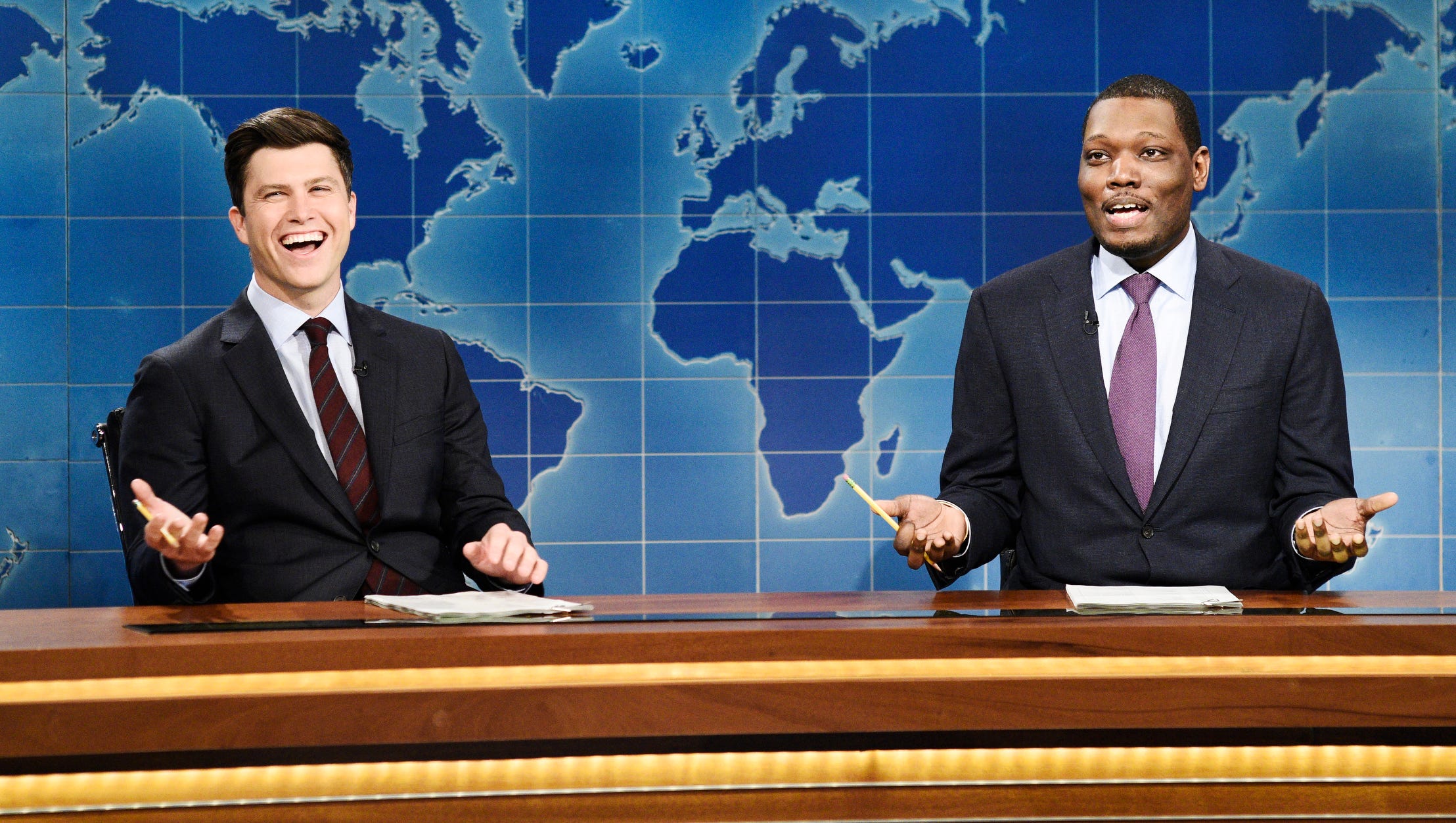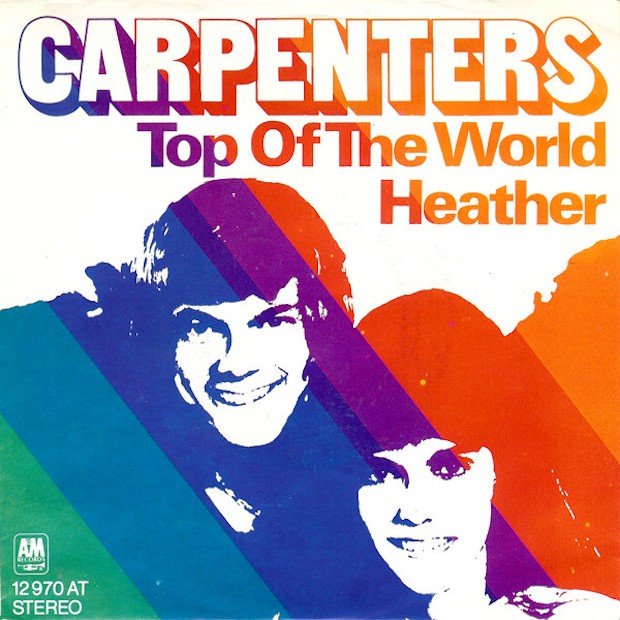Intro~
In English we have studied comedic techniques and their use in various examples of media. This is an area I have never been exposed to in an academic environment and was a whole new area of learning to finish the senior year. As much as lighthearted and fun humor is, this project more than any was significantly out of my comfort zone. I both hated and valued that. more reflection
Proposal~
The beginning of this process began with a humorist study and project proposal. We had to compare and analyze two comedic works relating to our project. My favorite humor is satirical. I watch Weekend Update on SNL and Last Week Tonight with John Oliver. This is an area of humor I found somewhat more comfortable. I studied these two programs and analyzed their common techniques. I focused the videos I chose towards Trump because that’s what I decided to focus my project on.
Here is my analysis:

A lot of the examples I saw in my influences were simply presenting things Trump has said or done and letting the audience do the joking in their heads. Because I am not the funniest person, I decided to make a parody to the Carpenters’ song Top of The World, about Trump, using some of his tweets.


Script~

Panic!!!
All of the above work was done a week prior to me typing at this moment. All of that work and entire project, flopped. I changed my idea 2 times and both of those initial ideas lead to no finished product. 4 days before due I changed my idea a final time totally not related to any sort of political humor. I created a quarantine fashion show. Needless to say, I was not a fan of this project, its just not in my skillset, style, or comfort zone. I would say SNL is still my influence for this project as they have shifted to at home videos due to the quarantine. SNL and other comedians who are finding creative ways to deliver their content and trying to bring a laugh in this odd situation, these flexible comedians are who I was influenced by for my final product.
Product~
Honors~
For honors we had to focus specifically on satirical works and write and essay comparing 2 works. I focused not the pieces we worked on in class.
Comedic Sincerity
Poo-Tee-Weet. That is the last line of Kurt Vonnegut’s novel, Slaughterhouse-Five. With context, the novel explains this as a word without meaning, and a word without meaning is the only way to describe a war without meaning. The play Rhinoceros, by Eugene Ionesco, has some direct parallels with Slaughterhouse-Five. The last section of the play reads, “I’ll put up a fight against the lot of them, the whole lot of them. I’m the last man left, and I’m staying that way until the end. I’m not capitulating” (Ionesco, 107). Rhinoceros and Slaughterhouse-Five, are two pieces of literature that use humor to deliver similarly harsh content.
Slaughterhouse-Five by Kurt Vonnegut is a novel about Billy Pilgrim, a boy who becomes unstuck in time and travels through various moments in his life. From his time as a war prisoner in Dresden to his time being abducted by aliens known as the Tralfamadorians, Pilgrim comes face to face with human nature in its truest form. In the play Rhinoceros by Eugene Ionesco, Berenger is a drunk in a world of high expectations and conformity. As everyone around him begins to turn into rhinos, he becomes the only human left, intent on not “capitulating”.
Going back to that final thought in Rhinoceros and Slaughterhouse-Five, both of these works were created in regards to World War 2. Rhinoceros addresses Nazism and conformity metaphorically, while Slaughterhouse tells the direct story of a character’s experience in the war and the bombing of Dresden. Slaughterhouse focuses on presenting the reality of human nature in beauty and danger, and the book notably has “almost no characters in [the] story and almost no dramatic confrontations.” Vonnegut explains, “one of the main effects of war, after all, is that people are discouraged from being characters” (Vonnegut, 209). Slaughterhouse tells the story of a boy being forced into a war surrounded by violence he doesn’t reciprocate. This book offers a hands-off solution to violence, there is no solution. In contrast, Rhinoceros ends with one character courageously standing alone and refusing to conform to the hate around him.
Slaughterhouse is considered a satirical novel. Satire is a type of comedy making fun of something, typically applied to an object of reality. In Slaughterhouse it is applied to human beings and human nature. That’s where this sense of reality comes from in Slaughterhouse, it is black humor. The content isn’t sugar-coated, it’s simply disguised. In contrast, Rhinoceros is an absurdist play, meaning “logically inappropriate.” By applying this to our idea of human nature, this implies the ending of the play (a man standing against conformity) is not logical. Humor can be used to address heavy content in two key ways: disguising an underlying darkness, or removing the darkness entirely. Irony is prevalent heavily in Slaughterhouse, in examples like Pilgrim watching a WW2 film in reverse (93), a hobo repeatedly stating “ain’t so bad” before eventually dying (89), and the repeated saying of “so it goes” after anyone or thing dies. Rhinoceros focuses more on absurdity and ridiculousness, such as a cat dying unexpectedly and the whole premise of turning into a rhino.
Rhinoceros hides its story behind absurd realities of people turning into rhinos and having conversations that never get to any sort of point.“My little cat… utter nonsense… I’ve got another cat you could have… what me? You dare to accuse me of talking nonsense… I’ll never have another.. Yes, absolute blithering nonsense” (29-30). This is how most of the conversations in this play go. Several conversations at once, leading to nowhere and calling it out as nonsense. There are some hints to the message and assumptions can be made based on the release year. Some readers even argue there is no underlying story, that the point of absurd theater is to not question that that is made absurd. Slaughterhouse-Five is without question about war, no metaphors, just a protagonist who is unstuck in time and spends much of his indefinite time at war.
Using a collection of irony, satire, black humor, and absurdity, Rhinoceros and Slaughterhouse-Five tell the story of a man against a world of violence and conformity. Billy Pilgrim and Berenger tell their stories alone, being impacted by a harsh world. The way these authors told these stories suggest that the only way to tell about war is through distractions and absurdities such as rhinos and aliens. Humor is a strong tool in telling stories that would otherwise be uncomfortable, in a way easily digestible by a reader. These are the lessons an audience needs to learn, and if the best way to do that is through theatrics and absurd stories, then so be it.
Works Cited:
Ionesco, Eugene. Rhinoceros and other plays. Grove Press, 2015.Vonnegut, Kurt, and Kevin Powers. Slaughterhouse-Five, or, The Children’s Crusade: a Duty-Dance with Death: a Novel. Modern Library, an Imprint of Random House, 2019.